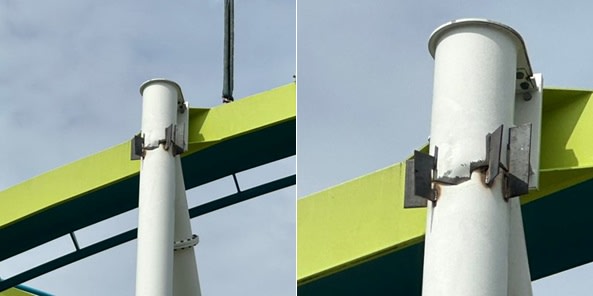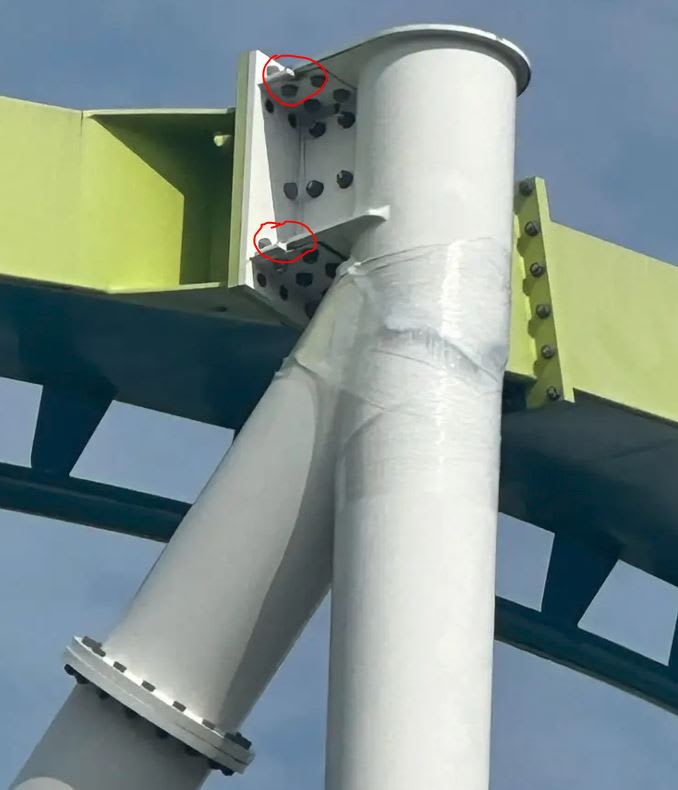A great number of buildings have collapsed without FEA. I'd expect the majority of collapses have never been near an FEA.
What I have seen in FEA is that local stress concentrations arise from the exactly sharp nature of the elements.
On one project we spent a huge amount of money in 17-4PH, 10,000 pounds of it, including the post-weld heat treat because the FEA showed some sharp stress concentrations. Turns out those almost instantly yield plastically and would not form cracks so a far cheaper alloy was used on production items. AFAIK, no design change and no cracks.
tl;dr FEA is more likely to result in an over-report of stress.
This looks like someone overlooked a major load case or the load case wasn't including all the factors; probably that the uplift from the roller coaster car was determined but not the torque applied via the rails. Perhaps they overestimated the torsional resistance of the curved box beam? FEA wouldn't but hand calcs might.
It also looks like what I've come to call - the can opener. Where a stiff section ends in the side or face of a flexible element the stiff end acts to punch into the flexible element. There needs to be significant reinforcement to avoid the start of a fatigue crack.

![[thumbsup2] [thumbsup2] [thumbsup2]](/data/assets/smilies/thumbsup2.gif)
![[ponder] [ponder] [ponder]](/data/assets/smilies/ponder.gif)

